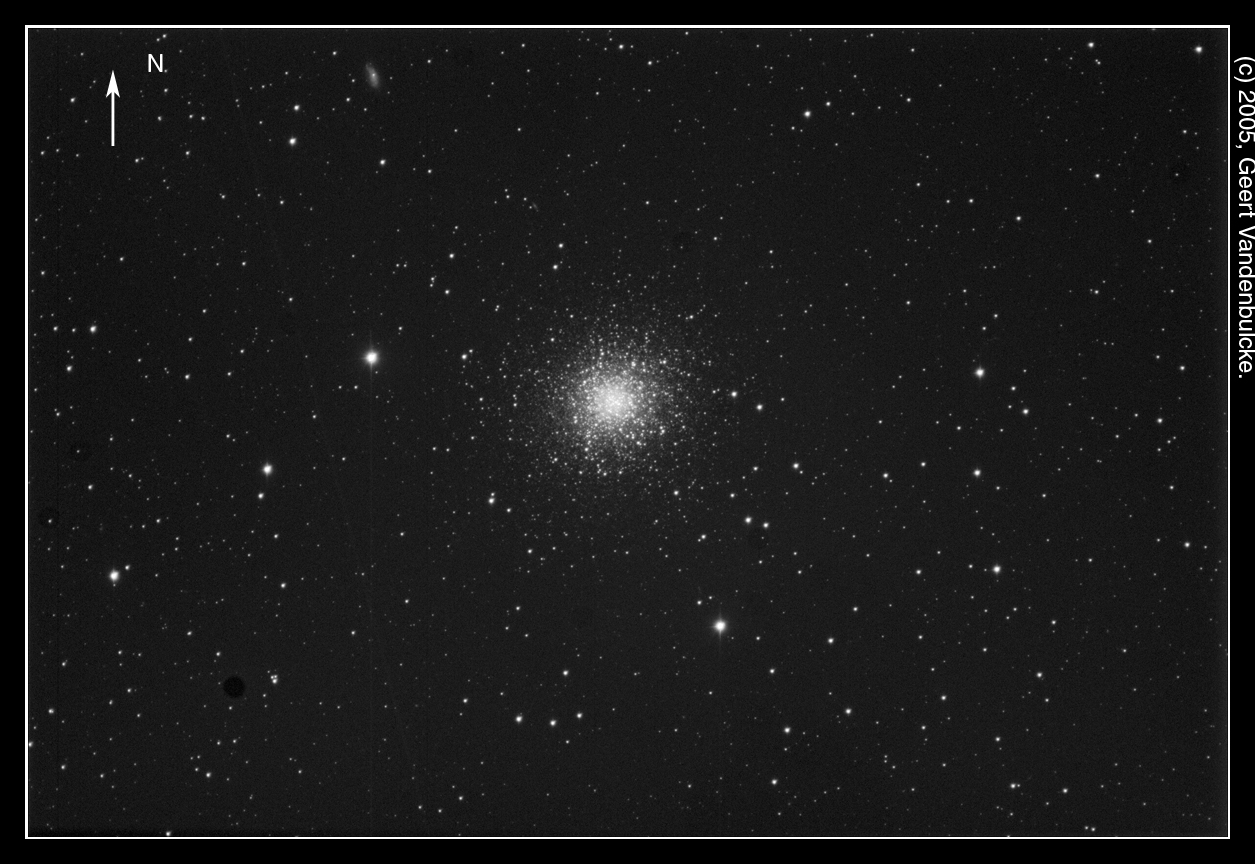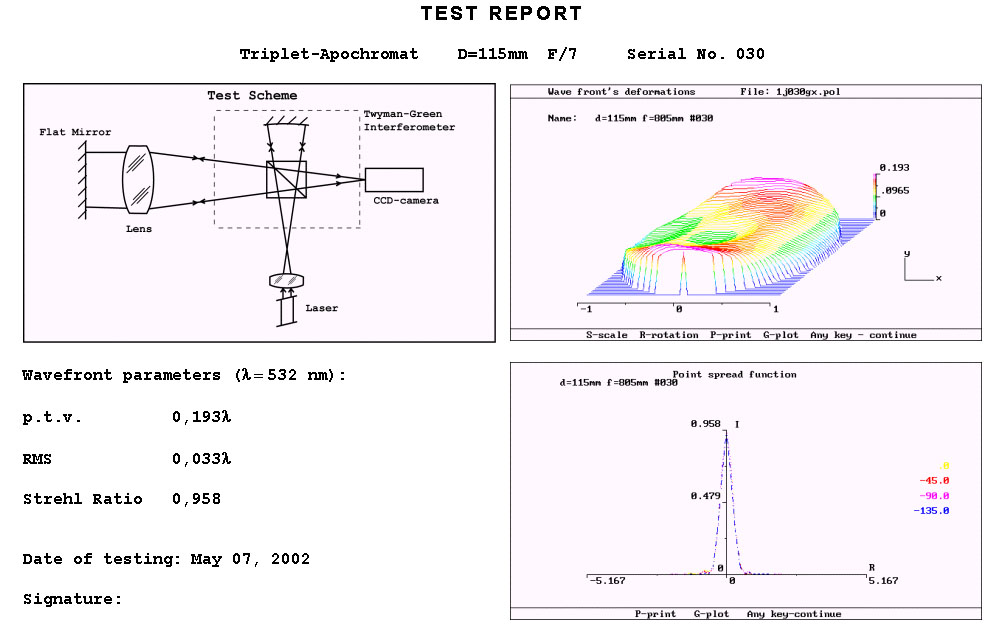
The APM/TMB 115 f/7 triplet APO.
I acquired my APM/TMB 115 f/7 APO as an used (but as new) item from APM Germany (Markus Ludes). It is serial nr 030 from this series. The data from this lens are given in the datasheet below:

This refractor also came with a Field Flattener, originally for a Pentax 6x7. As I don't own such a camera and do not intend to get one I asked APM to adapt the FF for my SBIG ST-10XME camera with a T-thread connection on which I use a Baader quick-disconnect system.
I had a Takahashi FS-128 refractor before this APM/TMB. As this is a CNC type APM/TMB APO it is heavier than the Takahashi but can be transported in a much smaller package if needed (retractable dewshield, removeable focuser parts, removeable finder). However, in use the TMB 115 f/7 CNC is 845 mm long and weighs 10.5 kg!
Photos of the telescope when I bought it new (Look further below to see the actual version!).
The photo below shows the triplet lens in its adjustable aluminium cell. The collimation screws are hidden by the cell and dewshield in this photo. The dewshield is retracted. Inside the tube you can see two of the three rods that connect the cell and focuser assemblies and also hold the internal diafragms.
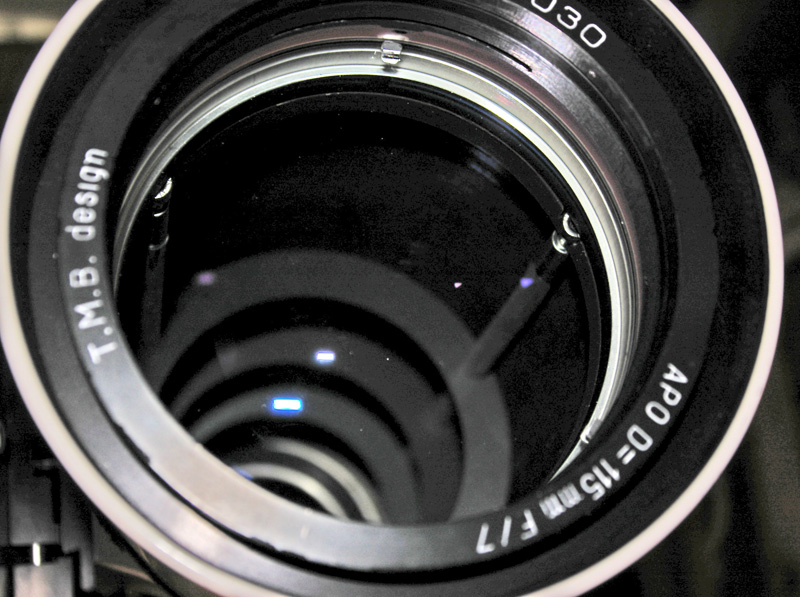
The telescope in it's normal use length (focuser 70 mm travel fully extended in picture) and in store/travel length. The focuser+support can be removed easily as well.
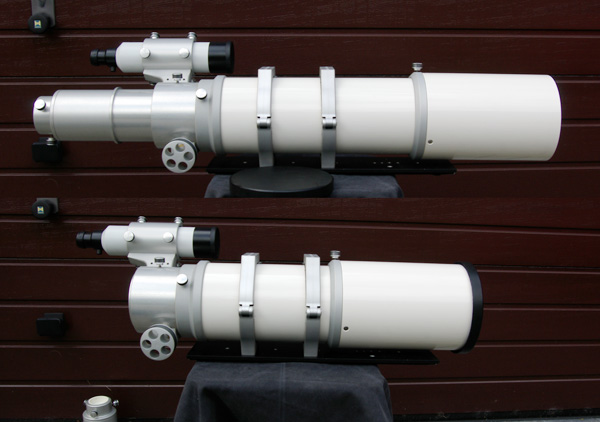
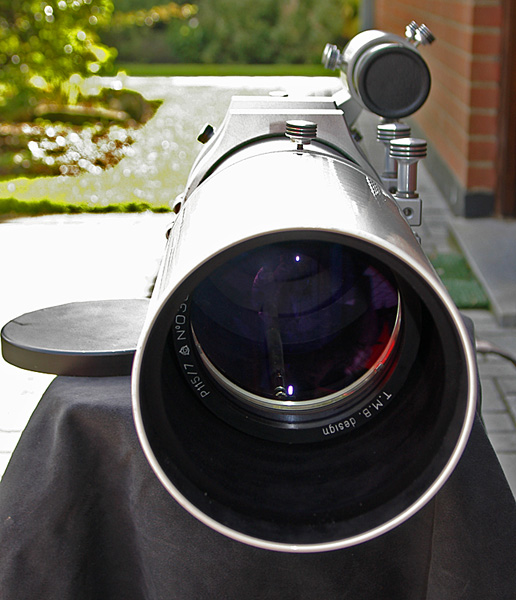
Detail of the large focusknob.
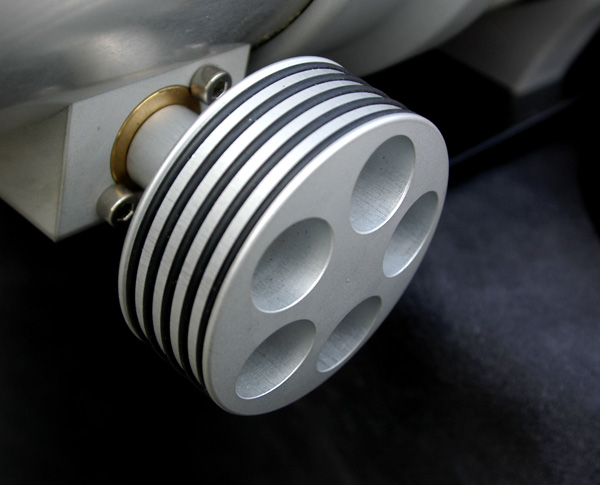
The focuser can be locked and can be rotated, the finder rotates with the focuserassembly.
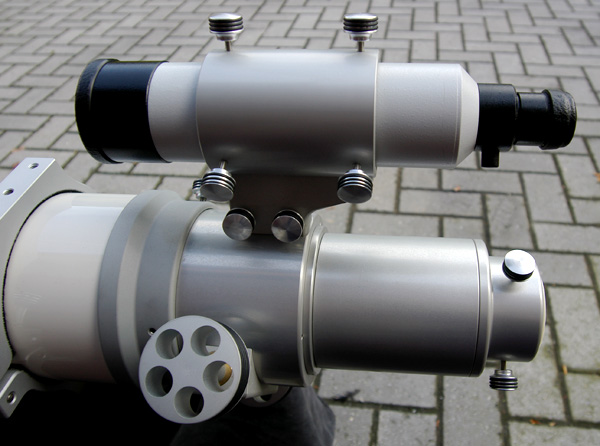
In July 2008 the telescope was converted to CNC LW II by APM Markus Ludes, Germany. Following pictures where taken just after I removed the telescope from the observatory on 27 January 2010 to take it inside.
The telescope tube and focuser + fielfdflattener need some cleaning, as it has been in use in the observatory all the time. Cleaning (except the objective) will be done once the telescope is at room temperature again.
Above, in shortest version, dew cap retracted and focuser extension tube removed.
Above and below: in normal working condition, dewcap extended, focuser extension tube mounted.
The markings on the dewshield of paint from the cap wich is a very tight fit.
Normal focuser knob and the optional DSM motor.
This aluminium box was used when I traveled to South France.
Telescope end of the fieldflattener, needs some cleaning.
Camera side of the fieldflattener with T-2 thread, adapted for my SBIG camera; originally this optic is made for Pentax 6x7 cameras.
The aft end of the fieldflattener can be unscrewed, the plastic tape is to prevent camera rotation during exposure.
Visual impressions (11-12 May 2005).
When used on the Moon, this refractor shows no colour fringing at all on the edge of the moon and gives crisp, contrasty and detailed views.
Saturn, although quite low in the sky and after opposition at time of observation was sharp, showing the Cassini division without problems and also showing surface markings. A few Saturn moons were readily visible as pinpoints of light around the planet.
Jupiter showed good contrast and detail in the belts. The moons of Jupiter were small disks of light surrounded by a faint diffraction ring.
I could use a Baader/Celestron binoviewer without problem. Magnifications used ranged from 22x to 213x without image breakdown. I also tried a magnification of 260x times on Jupiter with the bino but this proved a little too much with the seeing at that time.
A startest showed almost identical patterns in- and outside of focus. Star images snap into focus and focus is critical. The focuser, although sturdy, is a bit rough for fine focusing, I will add a Fine Focuser knob (FF2) from Mercury Systems Support to the focuser to improve on this. I've made a webcam recording of a star image in- and outside focus (about 10 mm defocus each side, bad seeing):
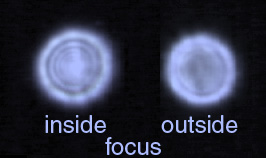
Pentax Ist*D digital photos of the waxing Moon, in prime focus, 11 May 2005.
Below are two photos taken on 11 May 2005. The crescent moon was exposed at 1/60 s at 200 ISO, while the eartshine was exposed for 10 s at 200 ISO. There was still twilight when these images were made, seeing was bad.

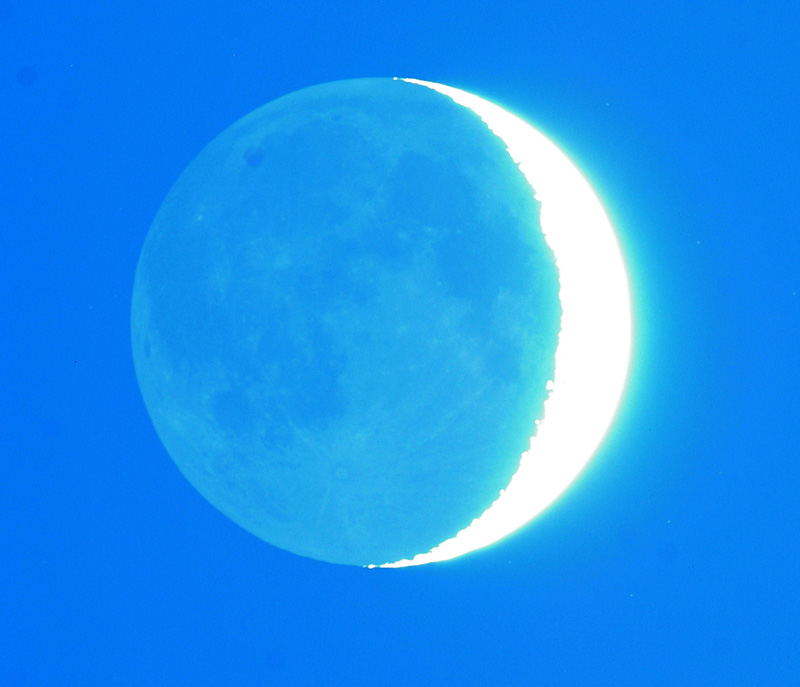
Webcam images of Jupiter and Saturn, using my Baader Fluorite Flatfield Corrector (2.25x magnification).
The short focal length of the TMB limits the imagesize for the planets, I prefer my SCT for such images, but I thought I'd give it a try anyway...
The images were acquired on 11 May 2005 using a Philips ToUcam Pro webcam, 900 frames out of 1800 registered and stacked in Registax.. Seeing was bad.
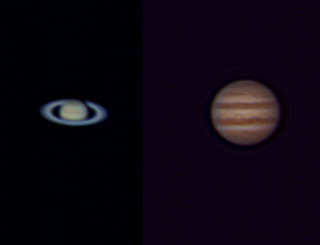
Deep-sky images with my SBIG ST-10XME.
The Field Flattener was originaly made with an adapter for a Pentax 6x7, but I asked APM/Markus Ludes to change this for my setup. On the TMBOptical Yahoo!Group, Thomas Back wrote that the correct distance should be 113 mm from the center of the Field Flattener aft lens element.
Focusing is critical, I used two pieces of tape crossed in front of the objective to focus on the diffraction spikes, the tape was then removed for imaging. After a period of about three hours, I rechecked focus and found that it had not changed while temperature had dropped about 5° C during that time.
It is imperative that the focuser friction is locked, the heavy SBIG camera will change position if this is not done!
The image below shows M3, taken on 11 May 2005 with the TMB 115 f/7 + Field Flattener, 15 m total exposure time with a SBIG ST-10XME. The image is shown at 1/2 original size.
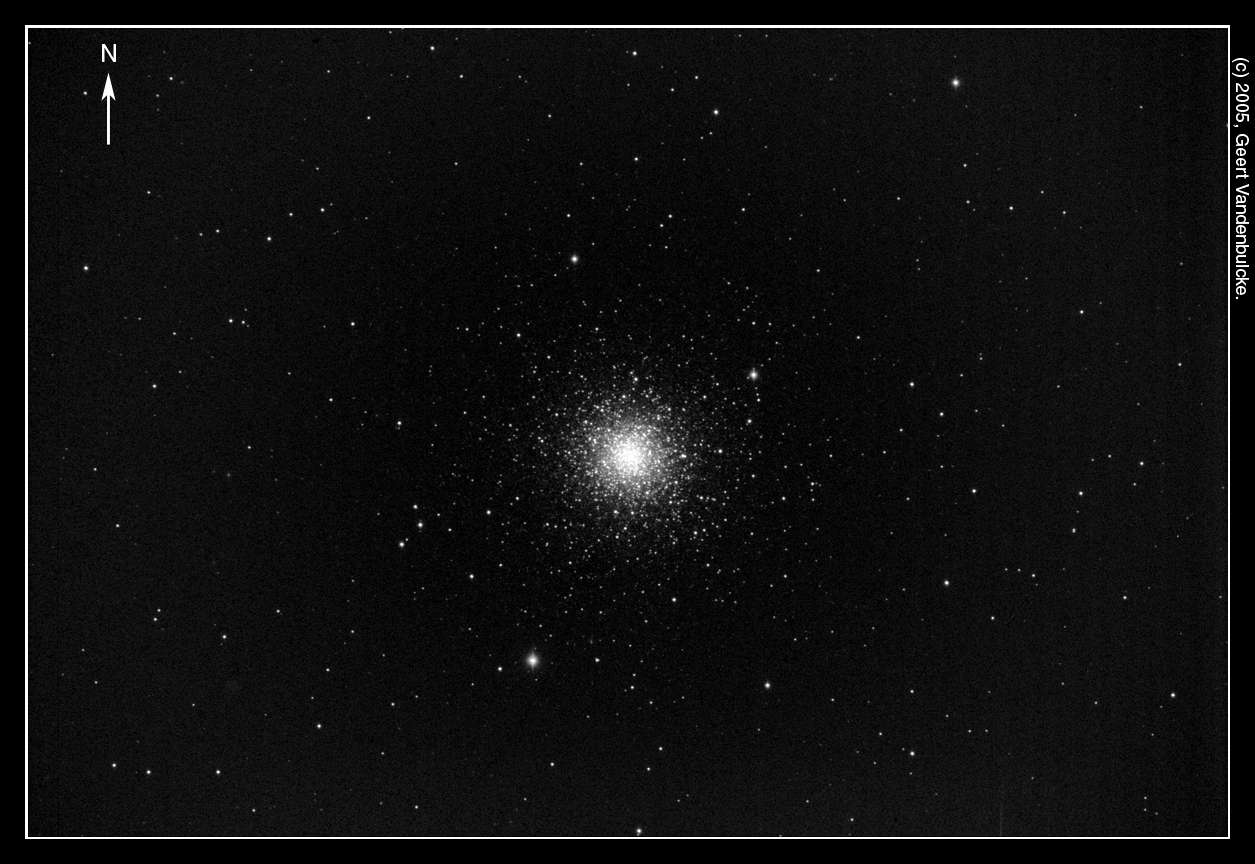
The image below is again M3, now taken on 17 May 2005 without the Field Flattener, same data as above. There was a quarter Moon about 30 degrees from M3 and some drifting cirrus cloud.
The difference in starshapes is not fully noticeable in these reduced images, but on the full scale image the starshapes near the corners without Field Flattener are slightly worse than with the flattener, on the image below it is best seen in the lower left corner. I guess for CCD's smaller than the SBIG ST-10 one can easily get away without the flattener and still get acceptable images. Also I noticed that the Field Flattener increases focal length by some 106 %, so instead of 805 mm focal length, the TMB 115 gets about 850 mm focal length, wich makes it about f/7.4.
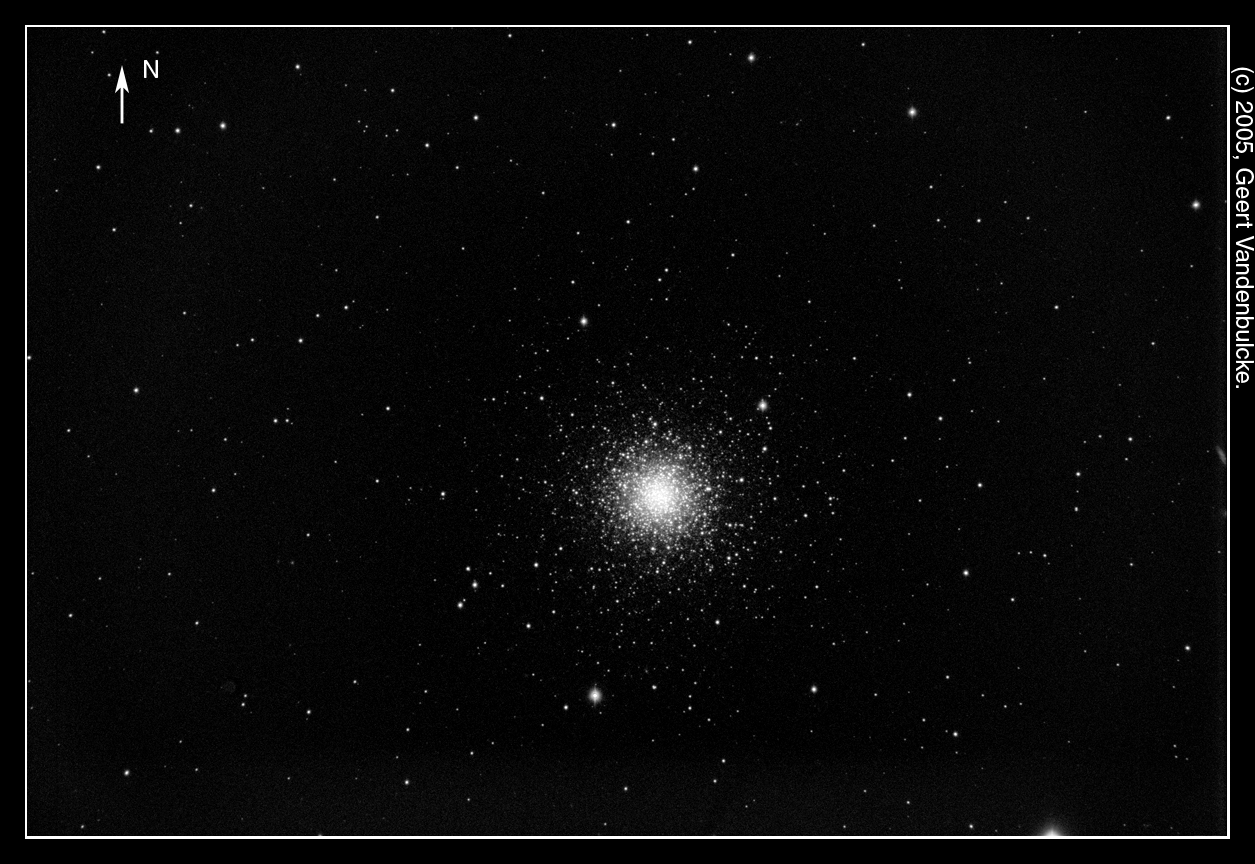
I also tried to use an Astrophysics 0.6x reducer with the TMB 115 . This combination is not very good, starshapes look odd and there is uneven illumination with this setup (can be corrected with a flatfield image off course) while the focus reduction was about 75 % in the setup used (FL= 600 mm). The image shows M13 taken on 17 May 2005, 15x 1m exposures.
